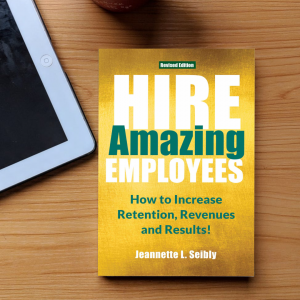
Did you know hidden talent can be easily spotted using a well-designed job-fit selection system?
While many complain about the difficulty of finding “hidden talent,” the reality is that the right person may be sitting right in front of you. Unfortunately, biases often cloud our ability to see candidates as they truly are. Other barriers—such as lack of objective data, unrealistic expectations, and flawed assumptions—can further obscure their potential. The list goes on.
Bottom line: We miss spotting hidden talent due to a lack of good, reliable, and replicable objective data when making hiring, promotion, and job transfer decisions.
Ways to Avoid These Common Pitfalls
Prepare Job Applicants. Send them a helpful video about your interview process and what to expect. For many, this is their first time talking with your company. Provide several interview questions (and be sure to ask at least one or two of these) so they feel comfortable with your selection process. Also, send them a link to the brag book: “The Secret to Winning the Job: Start Bragging!” Many applicants have hidden talents that they need to learn how to share effectively.
Use a Valid Honesty/Integrity Assessment. Make sure it’s a direct admission tool and use only for pre-employment purposes (not current employees). This can help weed out candidates who are good at selling themselves but have things to hide. They also help create safer workplace environments. Be sure to check local and state statutes to avoid asking inappropriate questions (e.g., age, marital status, children, etc.). Contact me for a product brochure.
Conduct Phone Screen Interviews to Gather Objective Data. Ask questions designed to reveal facts about past employment and education. Verifying and documenting are essential. Too often, candidates aren’t honest about their past … they just want the job. (For help creating questions, READ Chapter 10, Hire Amazing Employees)
Too often, we rely on intuitive hiring rather than using a strategic job-fit system and obtaining objective data. Then, we are surprised 2 hours, 2 weeks, or 2 months later when we realize the person who showed up isn’t the one we interviewed. This is avoidable.
Use a Qualified Job-Fit Assessment. It’s crucial to see the “whole person” (e.g., thinking style, core behaviors, and occupational interests). Using the wrong assessment allows applicants to present themselves as they want to be seen—not as they truly are. With over 3,000 published assessments available, it’s easy to select ones not designed or compliant with Department of Labor standards for pre-employment use. How do you know the difference? Ask for a technical manual and check for distortion, predictive validity, reliability, and validity coefficients. (See Chapter 9, Use the Right Assessments and Skill Tests, Hire Amazing Employees) Using the correct assessment, the right way, makes all the difference in the selection process!
Using a qualified job fit assessment helps alleviate concerns about the legalities of who you are hiring.
Interview for Job Fit. Too often, our beliefs about required skills are sabotaged by subjective biases (e.g., good at math = good accountant; friendly = great boss). Ask job-related questions and listen! Hidden talent will reveal itself when you deep dive into their responses using the “Rule of 3” to determine the depth of their skills. (For additional insights on the “Rule of 3” and creating job-related questions, READ Chapter 10, Hire Amazing Employees)
Conduct Due Diligence. It’s not uncommon for applicants to list education, job titles, and companies that don’t exist! Conduct background, licensing, education, and other checks. Using a third-party provider often ensures a thorough and consistent process. (SEE Chapter 17, Types of Checks, Hire Amazing Employees)
Require Onboarding for Best Results. Start when the job offer is accepted and continue over several months. Otherwise, your newest talent may “leave” while still on the payroll. (READ Chapter 20, The Success of a New Hire Is Up to You!, Hire Amazing Employees)
© Jeannette Seibly 2024–2025 All Rights Reserved
 Jeannette Seibly, an award-winning Talent Advisor, Leadership Results Coach, and Business Author, has guided thousands of executives and business leaders to achieve remarkable success over the past 33 years. Her specialty is delivering innovative solutions for hiring, coaching, and leadership challenges—with excellence and accountability at the core.
Jeannette Seibly, an award-winning Talent Advisor, Leadership Results Coach, and Business Author, has guided thousands of executives and business leaders to achieve remarkable success over the past 33 years. Her specialty is delivering innovative solutions for hiring, coaching, and leadership challenges—with excellence and accountability at the core.
Spotting hidden talent is easy when you use a well-designed strategic job fit system. When was the last time you reviewed your hiring practices? If you want to improve your retention, results, and revenues, contact me.




 Jeannette Seibly is a legacy-driven Talent Advisor, Leadership Results Coach, and Amazon Best-Selling Business Author. For over 33 years, she has empowered thousands of executives and business leaders to achieve sustainable success through strategic hiring, values-based coaching, and intentional leadership development. Her work blends clarity, accountability, and soulful impact—activating performance and purpose at every level.
Jeannette Seibly is a legacy-driven Talent Advisor, Leadership Results Coach, and Amazon Best-Selling Business Author. For over 33 years, she has empowered thousands of executives and business leaders to achieve sustainable success through strategic hiring, values-based coaching, and intentional leadership development. Her work blends clarity, accountability, and soulful impact—activating performance and purpose at every level.
 Jeannette Seibly, an award-winning Talent Advisor, Leadership Results Coach, and Business Author, has guided thousands of executives and business leaders to achieve remarkable success over the past 33 years. Her specialty is delivering innovative solutions for hiring, coaching, and leadership challenges—with excellence and accountability at the core.
Jeannette Seibly, an award-winning Talent Advisor, Leadership Results Coach, and Business Author, has guided thousands of executives and business leaders to achieve remarkable success over the past 33 years. Her specialty is delivering innovative solutions for hiring, coaching, and leadership challenges—with excellence and accountability at the core. 

 Remember, use a
Remember, use a 
